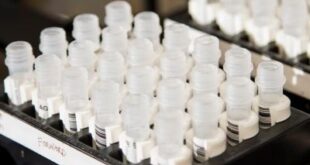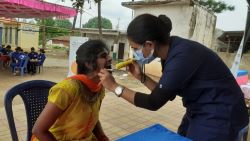This year’s floods in India caused the deaths of hundreds and the loss of homes for thousands of people. In the North-East, there were over 200 fatalities and 90+ lakh people who were impacted.
The town of Silchar, Assam was submerged in water for weeks! Residents were stranded in their homes, with no electricity, or access to basic amenities like clean water. Others were left without a place to call home. The small number of people who did have access to bottled water had to shell out a lot of money for it. In some regions, water was priced higher than petrol at Rs. 120 per litre!
Unable to go outdoors with water being waist high and buildings reduced to rubbles, many started repurposing rainwater. This seemed the only way for families to sustain themselves.
However, the consumption of rainwater comes with its own dangers. Unlike the damages to buildings and roads, the damage done to water systems or water quality is not visible to the eye. The water that looks clear in reality can have several contaminants. During floods, most water sources are at risk of getting polluted. Improper infrastructure can lead to leakage of sewage water as well. This water then gets mixed with sources like lakes or seeps into faulty pipelines to enter homes through taps.
Being a universal solvent, water can dissolve heavy metals, debris, grit, etc. If consumed for a long period of time, it can cause severe illness. Consuming water without proper filtration can further add to people’s distress since they can contract water-borne infections. Especially in the case of children, with their developing immune systems. In fact, not just consumption, most water sources post floods are deemed unfit for any other purpose as well.
It is during difficult times like this that I witnessed humanity rise up to save their own.
I was pleased to know that a few water experts from Bengaluru wanted to join hands and put their knowledge to good use. A forum was built to help affected families with easily accessible solutions to get clean drinking water. People could send images, visual properties and more information about the input water on the WhatsApp group led by Dr. TNVV Rao, Water Treatment Advisor. He would then suggest to them the most effective way to filter the water.
According to the doctor, a gravity-based purification system is the best option since it needs no electricity and is portable. With just activated carbon and ultrafiltration (UF), it can help filter most impurities like parasites, pesticides and dirt from the water. It is also considered safer than boiling water. Although, a con of this can be that it does not treat the heavy metals present in the water.
Moreover, in flood-prone areas, the locals are advised to keep emergency supplies handy. This includes bottles of safe drinking water and iodine/chlorine tablets that help purify any available water source to an extent. The previously mentioned portable, non-electric water purifiers can also be a part of the emergency kit.
Experts have also time and again stressed the importance of maintaining our lakes and wetlands. Natural reservoirs are being occupied to build buildings. Lakes have lost their capacities due to activities like dumping of solid waste and encroachment. Disappearing wetlands devoid of the flood waters of temporary storage. This negligence coupled with lack of rainwater harvesting, poor urban planning and structuring of drains, is leading to a lot of cities being not just naturally, but also ‘artificially’ flooded.
The situation can be grim even after the floods subside. The flood water easily penetrates into wells and other water reservoirs. This can lead to the locals not having access to drinking water as long as these sources have been cleaned up and deemed fit to use again. On the other hand, dug or bored wells are at high risk of re-contamination by flood water. During such times, water ATMs that run on solar power and provide people with clean water can be introduced.
Additionally, cities can have specific task forces consisting of environmental experts and planners. This will help monitor the ongoing activities in the city and ensure it has minimal involvement in causing artificial flooding. When there is an alert, the team can see to it that households are aware and prepared with everything they would need in case of no access to drinking water.
The floods in India have been merciless. Families have suffered, people have lost lives, buildings built over generations reduced to dust and livelihood lost. It is time for us as individuals, to step up and lend a helping hand to the people in need.
Donations can be made to NGOs and funds that ensure people get food and water. There are several make-shift shelters in certain regions. They usually have a lot of people and limited supplies. They require all the help they can get. Finally, there are funds to help residents rebuild their lives once the flood subsides.
Vijender Reddy Muthyala, Co-founder & CEO of Drinkprime
 Newspatrolling.com News cum Content Syndication Portal Online
Newspatrolling.com News cum Content Syndication Portal Online







